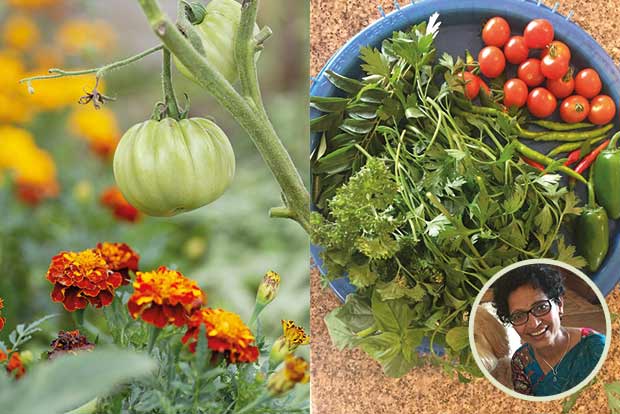Begin typing your search...
Find right ‘companion’ for plants in your garden
Through polyculture and ‘companion planting’, many varieties grow better. The technique controls pests and improves the use of space, says an expert

Chennai
The Native Americans began cultivating the ‘Three Sister’ plants — maize, corn and beans — in proximity to each other because they found each one benefits the other in multiple ways. This practice of planting different crops closely is being followed today as well, and is gaining popularity thanks to the worldwide organic food movement, under the name ‘companion planting’.
This technique of agriculture or gardening assist in the growth of plants by attracting beneficial insects, repelling pests, or providing nutrients, shade, or support. “The basic idea behind companion planting is both simple and sensible as many plants grow better near some companions than they do near others or when alone. Just like how people thrive with some and don’t get along with a few others!” explains Malathy Chandrasekhar, a certified Master Gardener who completed her training in the US with the Texas A&M AgriLife Extension Service.
She tells us how her tryst with polyculture (using multiple crops in the same space) began. “When I started planting vegetables in my backyard about six years ago, I did not want to use harmful pesticides and chemicals on them. I started researching how to grow them organically, but at the same time, minimize pests and bugs that attack the plants,” she says. She began following instructions that various online resources had, and eventually chanced upon the certificate program.
The process is quite simple:
“First, you pick plants that grow well in your own region and soil conditions and study the best time of year to plant them. It’s best to research on the types of companions online, as it will vary from region to region.
Next, decide whether you want to plant fruits, vegetables, herbs or flowers or a mix.
Then, decide how tall a plant will grow to determine how much space to leave between each companion plant. Plant the shorter ones in the front and the taller ones behind.
Make sure both types of plants have similar sun and water requirements. For e.g., don’t plant a herb that prefers shade with a flowering companion that needs lots of sun,” says Malathy.
If applied in a well-maintained garden, polyculture can produce startling results. “It can drastically improve the use of space, reduce the number of weeds and garden pests, and provide protection from heat, wind, and even the crushing weight of snow. In addition, I also enjoy the colourful flowers amidst my veggie garden!” she smiles.
Though from an IT background, Malathy is also a yoga instructor and has a website called Healthy Indian, which aims at educating people about making the right lifestyle choices. “I have always practised and preached growing your own food. But not just vegetables; companion planting can also be used in flower gardening. Both urban backyard gardeners and large-scale farms can stand to benefit from this,” she summarises.
Visit news.dtnext.in to explore our interactive epaper!
Download the DT Next app for more exciting features!
Click here for iOS
Click here for Android
Next Story



